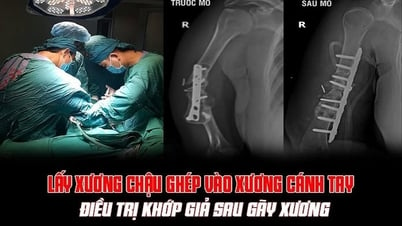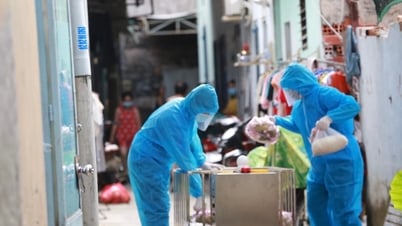On August 17, the Ho Chi Minh City Center for Disease Control (HCDC) officially put into operation a serum bank with a storage capacity of 400,000 - 450,000 serum samples.
According to Dr. Nguyen Hong Tam, Director of HCDC, the serum bank is a unit that collects, preserves and provides sample sources for testing, serving the work of controlling infectious diseases with 4 main goals: Predicting or early detecting the possibility of an outbreak, assessing the community immunity situation, evaluating the effectiveness of intervention measures and surveying the silent circulation of pathogens.
Currently, HCDC's serum bank is equipped with 5 deep freezers, 3 refrigerated centrifuges, equipment and personnel to meet the needs of sample collection, processing, storage and distribution. The serum bank is put into operation with a storage capacity of about 400,000 - 450,000 serum samples. It is expected that in the period of 2024 - 2030, HCDC will invest in expanding the serum bank and building infrastructure to increase sample storage capacity.
According to the plan, the Ho Chi Minh City Center for Disease Control will develop a plan for regular sample collection for the serum bank, develop a set of procedures for preserving, retrieving and using samples to serve different goals of disease control. The Center will also develop data analysis models, thereby providing directions for public health decisions in the area.
In the immediate future, HCDC will exploit sample sources from serum banks to assess immunity to measles and hand, foot and mouth disease, thereby forecasting the risk of epidemics in the City. In the future, it will continue to expand sample sources and diversify sample types to meet the needs of proactively controlling infectious diseases and aiming to control other diseases.
With modern equipment, the establishment of a serum bank is expected to help control the epidemic better, thereby contributing to improving the quality of health care and protection for people in Ho Chi Minh City./.
Source


![[Photo] Scientific workshop "Building a socialist model associated with socialist people in Hai Phong city in the period of 2025-2030 and the following years"](https://vphoto.vietnam.vn/thumb/1200x675/vietnam/resource/IMAGE/2025/5/21/5098e06c813243b1bf5670f9dc20ad0a)


![[Photo] Prime Minister Pham Minh Chinh receives the President of Asia-Pacific region of PowerChina Group](https://vphoto.vietnam.vn/thumb/1200x675/vietnam/resource/IMAGE/2025/5/21/0f4f3c2f997b4fdaa44b60aaac103d91)
![[Photo] Prime Minister Pham Minh Chinh receives Rabbi Yoav Ben Tzur, Israeli Minister of Labor](https://vphoto.vietnam.vn/thumb/1200x675/vietnam/resource/IMAGE/2025/5/21/511bf6664512413ca5a275cbf3fb2f65)
![[Photo] Determining the pairs in the team semi-finals of the National Table Tennis Championship of Nhan Dan Newspaper](https://vphoto.vietnam.vn/thumb/1200x675/vietnam/resource/IMAGE/2025/5/21/eacbf7ae6a59497e9ae5da8e63d227bf)























































































Comment (0)